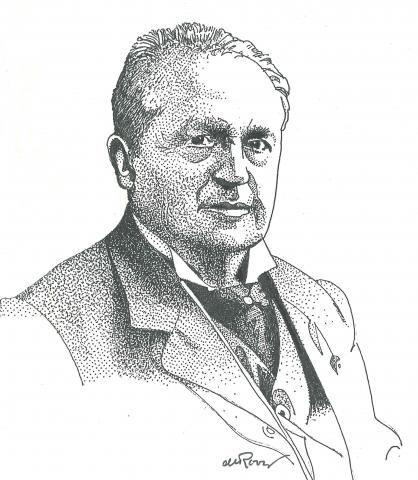A revised and updated version of
Abraham Kuyper: An Annotated Bibliography 1857-2010 by Tjitze Kuipers (2011)
You can buy a printed edition of this book on the site of the publisher.
1898
Six lectures delivered in Miller Chapel at Princeton Theological Seminary (PTS) in Princeton, New Jersey on October 10–11, 14, and 19–21, 1898. The Stone Lectures were held under the auspices of the Stone Foundation, which was created in 1871 by Levi P. Stone, a director (1869–1884) and trustee (1875–1884) of PTS. On October 22, 1898, the day after the final lecture, Kuyper received an honorary doctorate in law from Princeton University (see 1899.29).
In these six lectures Kuyper describes Calvinism as the “manifestation of the Christian principle”—an all-embracing principle, an all-embracing worldview, and “the only decisive, lawful, and consistent defense for Protestant nations against encroaching and overwhelming modernism.” Kuyper unfolds a Christian worldview that is relevant to every sphere of life. This is evident in the titles given to the lectures: (1) “Calvinism in History” (37 pp.); (2) “Calvinism and Religion” (43 pp.); (3) “Calvinism and Politics” (38 pp.); (4) “Calvinism and Science” (38 pp.); (5) “Calvinism and Art” (35 pp.); and (6) “Calvinism and the Future” (34 pp.). The lectures aimed at gaining worldwide recognition for Calvinism and encouraging study of how Calvinism might be applied in every sphere of life.
According to a note written by Prof. B.B. Warfield (1851–1921) on a fly leaf in the copy in the special collections at PTS, the first and fifth lectures were translated by Rev. J.H. De Vries (see 1892.05), the second lecture by Dr. A.H. Huizinga (see 1898.12), the third lecture by Dr. Henry E. Dosker, the fourth lecture by Dr. N.M. Steffens (see 1903.16), and the sixth lecture by Dr. G. Vos (see 1891.07). In the same note Warfield remarks that “the translated text was … set on type at Princeton and the printed sheets provided to Dr. Kuyper for use in the rostrum. Only a dozen copies were taken off the types.” Apparently at Kuyper’s request (cf. 1909.27), the lectures were separately paginated and the pages were printed on one side only with ample space between the lines and wide margins. A full syllabus of the lectures (eight pages) had been printed and was made available to those who attended the lectures and to other interested parties.
Warfield’s undated note seems to suggest that the translation and printing of these six lectures were realized within ten days. However, a letter (dated June 30, 1898 [KA 129]) sent to Kuyper by Prof. N.M. Steffens reveals that the translation of these lectures very likely started in the first half of 1898 with an American version of the five translators mentioned in Warfield’s note. The letter opens with the words: “Please find enclosed the translation of your fourth lecture, which was entrusted to me.”
The next step in the genesis of the English edition is revealed in a memorial contribution in 1922.03 (pp. 173–178) written by Ethel Ashton, a resident governess who in 1898 gave English conversation lessons to Kuyper’s daughters. Not satisfied with the translations of the lectures he had received from the United States, Kuyper reworked them into a second version with the assistance of Miss Ashton.
The third stage was accomplished during his holiday in the Adirondack Mountains (September 10–28, 1898: see letter 6 in 2004.03 [p. 34] and 2009.01 [p. 41]). During his stay in the Adirondacks he reduced each of his lectures to thirty-four pages; he also added some new information that he had gained by reading in the library of the RMS Lucania while crossing the Atlantic and later in the New York Public Library. According to Warfield’s note Kuyper’s revisions were received “ten days before the lectures were to begin” and sent to the five original translators for incorporation into the translations of their assigned lectures. Kuyper’s holiday efforts led to a printed translation, which he used during his six presentations in Miller Chapel on October 10, 11, 14, 19, 20, and 21.
In turn, both the first trade edition (see 1899.19) and the Dutch version (see 1899.25) were different from the “Princeton text” as printed for private use (the “dozen copies” of Warfield’s note). Over the course of nearly a year, Kuyper had been occupied with shaping his lectures on Calvinism—a striking phenomenon for a man whose usual policy was (like a journalist already occupied with his next assignment) to write and make public after having reflected on an issue, without spending any time polishing and changing the text for a subsequent printing.


